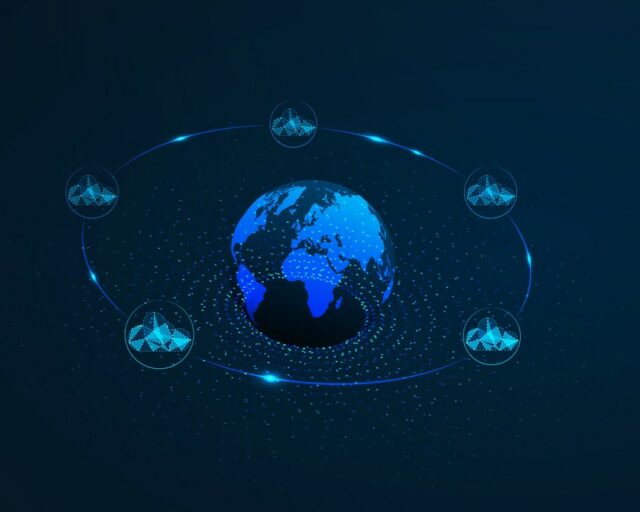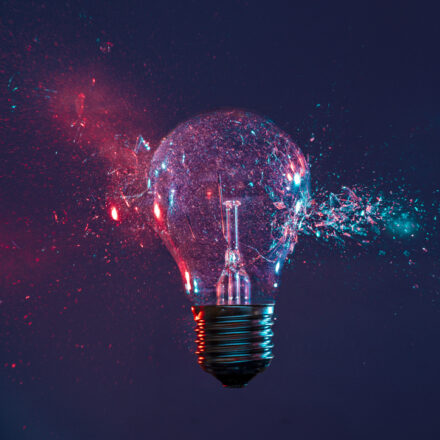By Jeff Clarke, vice chairman and co-chief operating officer, Dell Technologies

2022 has been a rollercoaster. I don’t think any of us could have predicted what was coming. The constant through it all has been the importance of technology to overcome our near-term obstacles and to realize our long-term opportunities.
The technological innovation that drives human progress is accelerating. With hyperconnectivity spanning multiple cloud environments and the edge, we now have data everywhere. Simply put, it’s growing not only in quantity, but in value every day.
At the forefront of this advancement and growth, we will experience new expectations. We will expect technology to make our lives easier, and our businesses more successful. We will expect that technology to help us advance forward in big areas from education to healthcare to government services and beyond. As a result, we will see our essential technologies and their corresponding user experiences rise to meet the challenge.
As we look ahead to 2023, I see four themes rising to the top of the CIO agenda:
Technology will define the work experience
 In the do-anything-from-anywhere economy, the future of work is evolving, and as we design for a hybrid world, technology rather than physical workspace, will increasingly define the employee experience. This is a blue-sky opportunity to design what works best for you, your company and your culture.
In the do-anything-from-anywhere economy, the future of work is evolving, and as we design for a hybrid world, technology rather than physical workspace, will increasingly define the employee experience. This is a blue-sky opportunity to design what works best for you, your company and your culture.
Version one of work-from-anywhere during the early stages of the COVID pandemic was all about the “anywhere” part. We used the mobility of modern clients to take our work, school and life to wherever we needed it. The next phase of this journey is about making the “work” part better. We need the right tools and devices, the right workspaces for collaboration, and the right culture to make work, well, work.
Being a student is different than being a doctor, teacher, engineer or data scientist. We now realize that having the right client capability, form factor and most importantly ecosystem of peripherals creates the complete environment needed to excel. We have seen investments in advanced display technology dramatically improve the effectiveness of developing software remotely. We have also seen better audio and video capability create a dramatic difference in remote learning. A personalized and optimized environment can be a path to real differentiation for users.
As a result, there will be a rising end-user expectation to seamlessly connect people to people, as well as to the data, applications and services they care about. After all, from building culture to driving innovation to serving customers, technology is the fulcrum of progress. So, no matter how organizations approach the future of work, the modern work experience will be defined by technology.
Walled gardens will crumble into tech ecosystems

The global technology industry is massive and growing every day. The good news is that there is no shortage of innovation to address the breadth of business opportunities. The tradeoff is that with each new facet of innovation, organizations are left with sprawl and complexity.
For example, in the early days of cloud, most companies ended up adopting multiple public, private, edge and even telecom clouds to power their business. This “multiple cloud” stage creates huge access to innovation within each cloud but inevitably creates silos and duplication of data. The siloed clouds look like walled gardens.
In 2022, we started to see an industry shift to true “multicloud” architectures. These use the compute services of whatever clouds you embrace but also focus on turning important capabilities ”horizontal” across the multicloud environment. A good example of this is storage and data as a common service all your clouds can access. Multicloud edge capabilities are being launched, and cyber resiliency and cyber vault technologies are already horizontal capabilities across clouds. Even the focus on Zero Trust security is really all about making sure the security architecture of multicloud is a common horizontal service, not a collection of silos.
One other interesting area is the digital transformation of our telecom networks. We expect even broader adoption of virtualization, software defined architectures, open systems and open interfaces with early adoption of concepts like Open RAN. While Dell is directly working in telecom to make this happen, indirectly every enterprise’s digital transformation should benefit from increased openness and faster innovation in our communication systems.
In 2023, we expect accelerating innovation to focus on making the entire technology ecosystem work as a platform for your digital transformation. We also expect organizations to lean into technology that gives them flexibility and open access to innovation, and to partners who can coordinate the sprawl into an automated working system.
And there’s good reason – no single solution, platform or provider will deliver on the full promise of technology. That means that the proverbial “walled gardens” of “closed” ecosystems will crumble.
AI will reach an inflection point
 We’ve been talking about the promise of AI for years. 2023 is a year that we expect acceleration of real-world use of AI and machine learning. We have the tools and software systems. We have accumulated significant data sets. We also have invested in training across almost every industry so our teams can graduate from experimentation to real world AI projects.
We’ve been talking about the promise of AI for years. 2023 is a year that we expect acceleration of real-world use of AI and machine learning. We have the tools and software systems. We have accumulated significant data sets. We also have invested in training across almost every industry so our teams can graduate from experimentation to real world AI projects.
At Dell, we have been on this journey and today have around 1000 projects, products, or efforts focused on using AI to advance our business. We are seeing our customers following a similar path, and in 2023, we’ll begin to see more real impacts of AI/ML.
That means, we also need more infrastructure optimized for these highly demanding workloads. Advanced servers and storage to power AI are doing that work for customers today, but in 2023, there will be an even broader range of acceleration chips entering the market and a correlating increase in performance and efficiency.
We also need to make it simpler to share data between clouds so that training and inferencing activity can be distributed. In fact, it is estimated that by 2025, 88% of servers for AI workloads deployed at the edge will be used for inferencing and the distribution of not just data, but also the AI/ML processing of that data is already underway.
Organizations that ride the second wave of AI will see a distinct competitive advantage as AI becomes able to better perceive, learn and reason – and give developers and data scientists more freedom to deliver applications and outcomes. Organizations can enhance productivity and efficiency, lower power requirements, and accelerate multicloud and edge strategies. As the industry matures, AI will also become more democratized as open-source AI becomes prevalent and accessible to larger communities.
Momentum will accelerate for Zero Trust architectures
 The digital transformation of the global economy is significantly increasing the number of potential attack surfaces. The lack of a true perimeter puts organizations at greater risk to their data, their supply chain and anywhere along that continuum. Today, ransomware attacks are the #1 threat for most organizations, occurring every 11 seconds and costing $13 million per occurrence.
The digital transformation of the global economy is significantly increasing the number of potential attack surfaces. The lack of a true perimeter puts organizations at greater risk to their data, their supply chain and anywhere along that continuum. Today, ransomware attacks are the #1 threat for most organizations, occurring every 11 seconds and costing $13 million per occurrence.
With so many of our customers globally transforming their security strategies, many are looking at Zero Trust architectures to better secure their environments. The three main tenets of Zero Trust aren’t that challenging: universal continuous authentication of everything; robust authoritative policy driven behavior; and deeply integrated threat management.
The real challenge is the current state of the industry and technology makes the design and integration of Zero Trust too complex for most customers. Our job is to ease that burden and simplify the process. This includes assessing an organization’s current state and delivering actionable insights to mature their cybersecurity programs and align to Zero Trust. Through the continued development of roadmaps, best practices and standardization, we can make adoption much quicker and easier. Ultimately, Zero Trust will become the foundation for a new level of data security and trust in a highly distributed multi-cloud world where everything is connected.
This shortlist is at the top of my mind for the next year, but if there’s one thing 2022 taught us, it’s how hard it is to predict the future. No doubt, 2023 will be full of unknowns and surprises. But as a tech optimist, I am confident that innovation will drive amazing progress. And I’m excited for what lies ahead.

